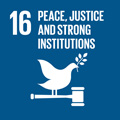- Docente: Salvatore Vassallo
- Credits: 8
- SSD: SPS/04
- Language: Italian
- Teaching Mode: Traditional lectures
- Campus: Forli
-
Corso:
Second cycle degree programme (LM) in
Mass media and politics (cod. 8051)
Also valid for Second cycle degree programme (LM) in International Relations and Diplomatic Affairs (cod. 9247)
Learning outcomes
The course introduces students to concepts, methods and techniques developed in the social sciences for analyzing opinions on matters of public interest, on political attitudes and electoral behavior. At the end of the course the student knows: some of the most important theories about public opinion formation; how to design and conduct social surveys; howsurveyscan be analysed, through statistical tools, in order to forecast electoral results and to find the underlying factors that influence political behavior; how, in democratic polities, citizens' opinions on political issuesare polarized.
Course contents
The first part of the course provides the categories and basic methodological canons of empirical research on social and political phenomena: definition of the research questions, assumptions, concepts and indicators; survey design, with particular attention to the formulation of questionnaires and the sampling plan; presentation of the survey results and analysis by the main statistical techniques. The second part presents the main assumptions and analyses on factors that influence the formation of political opinions and voting choices: the ascribed characteristics of voters (gender, age, education , family), their position in the social structure (class, religion, territory), their long-term political predispositions (left-right placement, party identifications, values), their assessment on the objects of competition (government, political parties, leaders). The third one applies the method and concepts learned in the first two parts to the analysis of changes in the structure of political competition produced over the last decade by the politicization of migrations and by the rise of "populist" leaders and parties.
Readings/Bibliography
Investigating the views of the public. Explaining the voting behavior. Questions and hypotheses
Harold D. Clarke, David Sanders, Marianne C. Stewart, and Paul Whiteley (2004). Political Choice in Britain, Oxford University Press, pp. 2-35.
Lorenzo De Sio (2011). Competizione e Spazio Politico. Bologna, Il Mulino, pp. 17-79.
Concepts, properties, indicators, variables
Piergiorgio Corbetta, Giancarlo Gasperoni, Maurizio Pisati. Statistica per la ricerca sociale , Il Mulino, Bologna, 2001, pp. 15-44.
Surveying opinions through polls
Piergiorgio Corbetta (2015), La ricerca sociale: metodologia e tecniche. II Le tecniche quantitative, Il Mulino, capp. 3-4-5.
Piergiorgio Corbetta, Giancarlo Gasperoni, Maurizio Pisati (2010). Statistica per la ricerca sociale, Il Mulino, Bologna, cap. 10.
Univariate analysis
Piergiorgio Corbetta, Giancarlo Gasperoni, Maurizio Pisati (2001). Statistica per la ricerca sociale, Il Mulino, Bologna, capp. 2-3.
Bivariate analysis: cross-tabulation and simple regression
Piergiorgio Corbetta, Giancarlo Gasperoni, Maurizio Pisati. Statistica per la ricerca sociale , Il Mulino, Bologna, 2001, capp. 4-6.
Multivariate analysis: multiple and logistic regression (basic notions)
Piergiorgio Corbetta, Giancarlo Gasperoni, Maurizio Pisati. Statistica per la ricerca sociale , Il Mulino, Bologna, 2001, capp. 7-9.
Ascribed characteristics: age, gender, education, family
Piergiorgio Corbetta, Luigi Ceccarini. Le variabili socio-demografiche: generazione, genere, istruzione e famiglia , in: Paolo Bellucci, Paolo Segatti (a cura di). Votare in Italia, 1968-2008. Dall'appartenenza alla scelta , Bologna, il Mulino, 2011, pp. 83-148.
Place in the social structure: class, religion, territory
Marco Maraffi, Hans Schadee, Cristiano Vezzoni, Gabriele Ballarino. Le fratture sociali: classe, religione, territorio . in: Paolo Bellucci, Paolo Segatti (a cura di). Votare in Italia, 1968-2008. Dall'appartenenza alla scelta , Bologna, il Mulino, 2011, pp. 149-186.Political predispositions: left-right, positional issues, party identification, values
Salvatore Vassallo, Sinistra e destra. Una distinzione sfuggente ma necessaria . In: ITANES, Sinistra e destra: Le radici psicologiche della differenza politica , Bologna, Il Mulino, pp. 19-44.
Roberto Biorcio, Gli antecedenti politici della scelta di voto: l'identificazione di partito e l'autocollocazione sinistra-destra , in: Paolo Segatti (a cura di). Votare in Italia, 1968-2008. Dall'appartenenza alla scelta , Bologna, il Mulino, 2011, pp. 187-211.
Short term evaluations: valence issues, state of the economy, retrospective voting, leadersPaolo Bellucci, Paolo Segatti, Hans Schadee, Mauro Barisione, Decidere sui temi, sulla competenza dei partiti e sui leader: i fattori di medio periodo , in Paolo Segatti (a cura di). Votare in Italia, 1968-2008. Dall'appartenenza alla scelta , Bologna, il Mulino, 2011, pp. 289-327.
Explaining the populist wave
Dani Rodrik. 2018. «Populism and the Economics of Globalization». Journal of International Business Policy, 1–22.
Liesbet Hooghe e Gary Marks. 2018. «Cleavage theory meets Europe’s crises: Lipset, Rokkan, and the transnational cleavage». Journal of European Public Policy 25 (1): 109–35.
Pippa Norris e Ronald Inglehart. 2019. Cultural Backlash: Trump, Brexit, and Authoritarian Populism. Cambridge University Press (chapters 1, 2, 3, 8, 13).
Teaching methods
The course consists of twenty lessons. Students will be encouraged to actively participate. They will also be asked to perform analysis of World Value Survey, European Social Survey and Itanes (Italian National Election Studies) survey data. Students are strongly encouraged to read the reference texts of each lesson in advance. They will be asked to present and discuss them in class. The diagrams and figures used by the instructor will be made available to students in the days following each lesson.
All lessons, with few exceptions, will be held in presence. Students will also be allowed to follow them remotely on MS TEAMS.
Assessment methods
Each student must write a paper (15-20,000 characters) on one of the course topics. Students have to base their analysis on scientific literature and elaborations ofWorld Value Survey, European Social Survey, orItanes (Italian National Election Studies) survey data, provided by the instructor.Students who are found to have committed plagiarismwill be excluded from the course and will not be admitted to the final examination. The final marks will be based onpaper assignmentand an interview concerning all the course topics.
Teaching tools
Video projector, PC, Stat Lab.
Office hours
See the website of Salvatore Vassallo
SDGs

This teaching activity contributes to the achievement of the Sustainable Development Goals of the UN 2030 Agenda.
